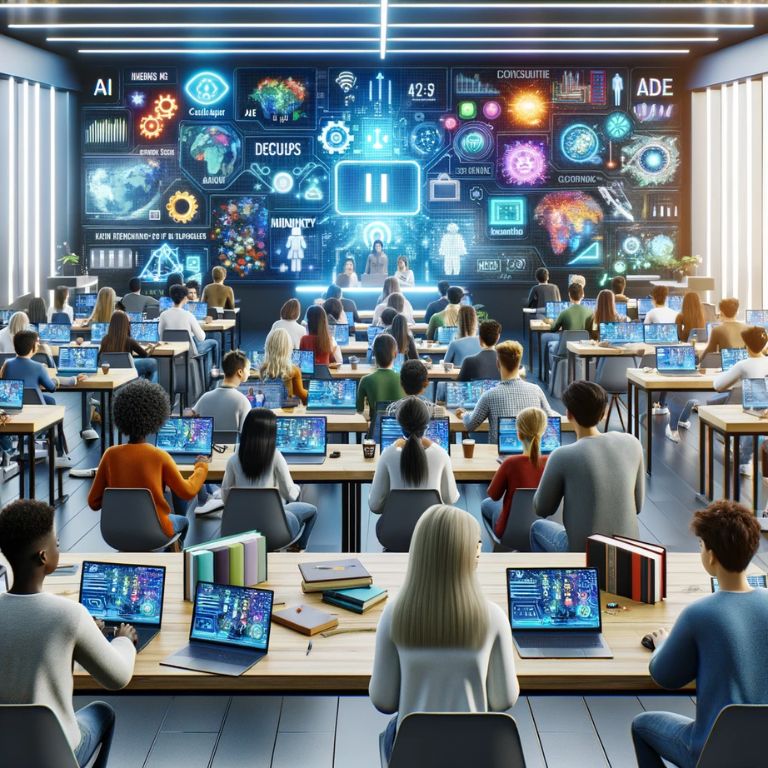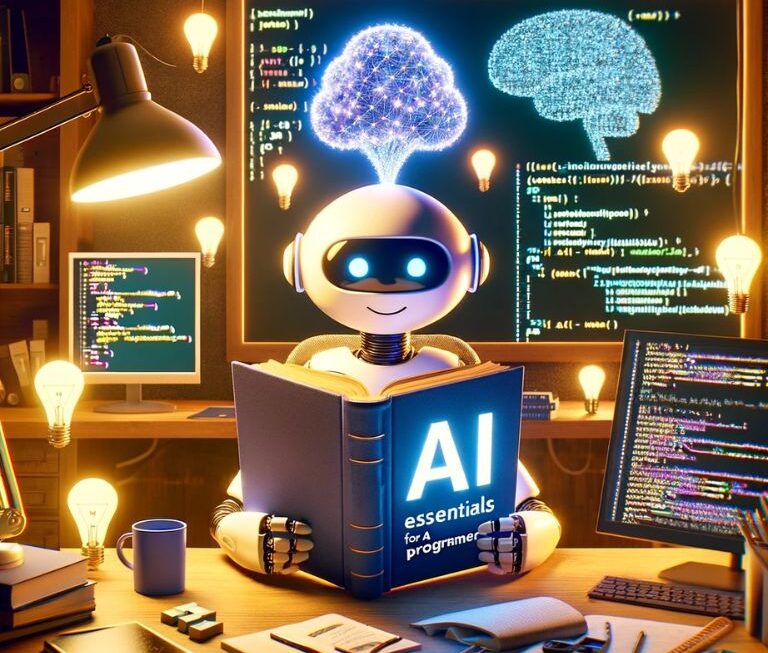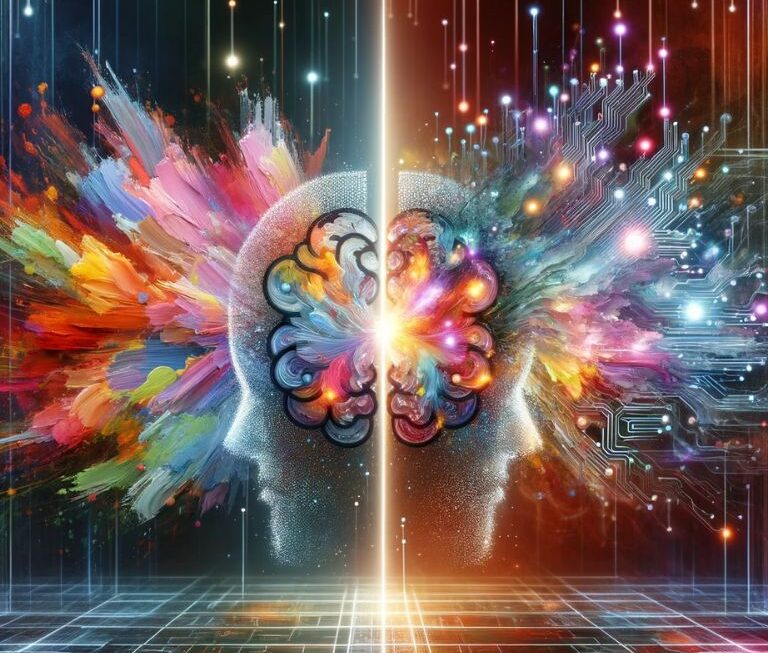The advent of Generative Artificial Intelligence (AI) has ushered in a new era in the field of education. Among the various AI technologies making waves, two names stand out: ChatGPT and Midjourney. These technologies are not only transforming how educational content is delivered but also reshaping the very fabric of teaching methodologies, policy-making, and research pursuits in education. This article delves into the multifaceted impact of these generative AI tools, offering insights into their growing role in the educational sphere.
Overview of ChatGPT and Midjourney
ChatGPT, a product of OpenAI, is a cutting-edge language model with a wide range of educational applications. It excels in content creation, tutoring support, and language learning assistance. On the other hand, Midjourney is a remarkable tool known for its ability to produce detailed and creative visual content. In educational contexts, Midjourney can transform visual learning by generating custom illustrations, diagrams, and educational visuals, making it invaluable for subjects reliant on visual elements, offering a comprehensive solution for both textual and visual learning needs.
Purpose and Scope of the Article
The purpose of this article is to provide a comprehensive analysis of how ChatGPT and Midjourney are influencing educational practices, policies, and research. We aim to explore:
- The ways in which these tools are being integrated into educational settings.
- The implications of their use on teaching methodologies and policy development.
- The potential they hold for research and development in the education sector.
| AI Tool | Application in Education | Potential Benefits |
| ChatGPT | Content creation, tutoring, language learning | Personalized learning, efficiency in content generation |
| Midjourney | Visual aids, creative projects | Enhanced engagement, support for visual learners |
Revolutionizing Teaching Methods with ChatGPT
Interactive Learning Experiences
ChatGPT is transforming traditional teaching methodologies by introducing interactive learning experiences. This shift is characterized by several key aspects:
- Enhanced Student Engagement: ChatGPT’s conversational interface allows students to engage in dialogues, making learning more interactive and less passive.
- Personalized Learning Paths: The AI can adapt to individual student needs, offering tailored explanations and resources, thereby catering to diverse learning styles and paces.
- Real-Time Feedback and Support: Students can receive immediate assistance and clarification on various topics, which is particularly valuable in complex subject areas.
- Gamification of Learning: Teachers are using ChatGPT to create educational games and quizzes, making learning more enjoyable and increasing student motivation.
Customized Content Creation
ChatGPT empowers educators by enabling the creation of custom learning materials. With its advanced language capabilities, it aids in crafting tailored lesson plans, educational resources, and entire curricula to suit specific teaching needs. This revolutionizes teaching material preparation, addressing diverse learning styles effectively. Customization enhances the educational experience, while also saving teachers time and effort, enabling them to focus on direct student interaction and support, ultimately improving the quality of education.
Midjourney’s Role in Educational Visual Learning
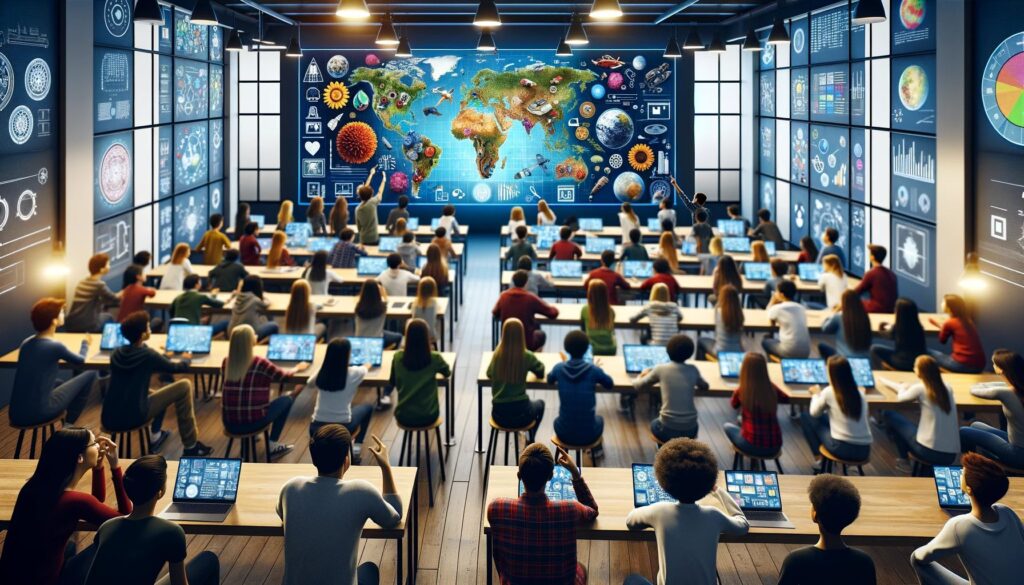
Enhancing Visual Aids and Creative Projects
Midjourney is a transformative tool in visual learning within education. This AI platform excels in crafting custom, high-quality visual aids, enriching the learning process. Educators use it to create intricate visuals, from science diagrams to historical reenactments, clarifying complex concepts and improving retention. In creative fields like art and design, Midjourney empowers students to explore visual ideas and innovate on projects. Integrating AI-generated visuals not only enhances teaching but also sparks creativity and learning innovation among students.
Impact on Visual Learning Strategies
The incorporation of Midjourney in educational practices influences visual learning strategies in several significant ways:
- Improved Conceptual Understanding: Complex ideas are more easily understood when accompanied by detailed and accurate visuals.
- Increased Student Engagement: Visually appealing content captures the attention of students, leading to higher levels of engagement and interest.
- Support for Diverse Learning Styles: Visual aids cater to learners who are more responsive to graphical or visual information, facilitating a more inclusive learning environment.
- Enhanced Memory Retention: Studies suggest that visual information can be retained more effectively than text-only materials, making learning more efficient.
- Encouragement of Creative Thinking: The use of AI to generate unique visuals stimulates creative thinking and problem-solving skills in students.
Policy Implications and Ethical Considerations
Data Privacy and Security in Educational Settings
The integration of AI technologies like ChatGPT and Midjourney in education raises critical concerns around data privacy and security:
- Data Protection: Safeguarding student data from unauthorized access and breaches.
- Regulatory Compliance: Adhering to laws like FERPA to protect student records.
- Transparent Data Use: Clearly defining how AI tools use student data for trust.
- Secure Integration: Implementing strong cybersecurity for educational platforms.
- Training: Educating teachers and students on safe AI interactions.
Ethical Use of AI-generated Content
Ethical concerns in AI-generated education content are paramount. Balancing technology with critical thinking and creativity is key. Maintaining authenticity in research and writing is vital, with clear citation guidelines to ensure academic integrity. This extends to visual content, promoting accuracy and avoiding biases. Achieving ethical AI integration is crucial for academic ethics and technological progress.
Research and Development: Advancements Enabled by AI
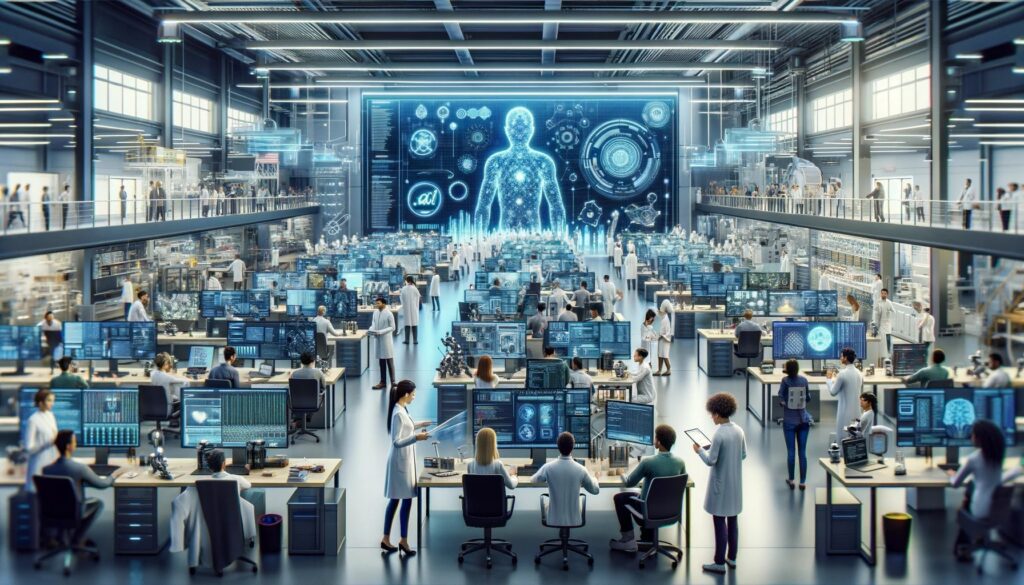
Novel Research Methodologies
AI tools like ChatGPT and Midjourney are revolutionizing academic research by enabling swift data analysis and novel methodologies. ChatGPT accelerates literature reviews and linguistic analyses with unmatched efficiency, while Midjourney aids in generating intricate visualizations for historical and scientific research. These capabilities enhance existing methods and spark innovative approaches, enhancing research’s accuracy and scope.
Contribution to Academic Research
The integration of AI like ChatGPT and Midjourney into academic research has several key contributions:
- Enhanced Data Processing: AI tools can handle large datasets, aiding in more efficient data analysis and interpretation.
- Innovative Presentation of Information: AI-generated visuals and text can aid in presenting research findings in more engaging and understandable ways.
- Cross-disciplinary Applications: AI’s versatility allows it to be applied in diverse academic disciplines, from humanities to hard sciences.
- Support for Complex Simulations: AI can simulate scenarios or models that are difficult or impossible to recreate in real life, offering new insights.
- Facilitating Collaborative Research: AI tools can assist in collaborative projects by synthesizing and integrating information from various sources.
Student Engagement and Learning Outcomes
Assessing Changes in Student Engagement
AI technologies like ChatGPT and Midjourney have revolutionized student engagement in education. Their dynamic and interactive features capture student interest in ways traditional methods often can’t. ChatGPT’s interactive dialogue encourages critical thinking, while Midjourney’s visually stimulating content appeals to visual learners, making complex subjects more accessible. These AI tools actively engage students in the learning process, resulting in increased participation, enthusiasm for learning, and improved overall engagement with their studies.
Impact on Learning Outcomes and Academic Performance
AI technologies like ChatGPT and Midjourney are revolutionizing learning outcomes. ChatGPT offers personalized tutoring, adapting to individual learning styles, and boosting comprehension. Midjourney’s visual content aids understanding, engagement, and information retention. These tools lead to improved grades, stronger problem-solving skills, and deeper subject understanding, significantly enhancing academic performance.
Prospective Paths and Possible Obstacles
Anticipating Future Trends in AI and Education
The future of AI in education is promising, with trends pointing towards greater personalization and immersion. Technologies like ChatGPT and Midjourney are evolving to better understand and adapt to individual student needs, enhancing personalized learning. Integration with emerging technologies like virtual and augmented reality could create fully immersive learning environments, making education more accessible and engaging. These advancements have the potential to revolutionize teaching and learning at all levels.
Addressing Potential Challenges and Risks
While the future of AI in education is promising, it also presents several challenges and risks that need to be addressed:
- Ensuring Equitable Access: Preventing a digital divide by ensuring all students have access to AI tools and the necessary technology.
- Maintaining Academic Integrity: Developing strategies to ensure that AI tools are used to support, not replace, student learning and creativity.
- Balancing AI and Human Interaction: Finding the right balance between AI-driven and human-mediated educational experiences.
- Managing Data Privacy Concerns: Continuously updating data protection measures to safeguard student information.
- Mitigating Bias in AI Algorithms: Ensuring that AI tools are free from biases that could affect the quality and fairness of education.
- Preparing for Workforce Changes: Adapting curricula to prepare students for a job market increasingly influenced by AI and automation.
Conclusion
The integration of AI tools like ChatGPT and Midjourney into educational practices marks a significant shift towards more personalized, engaging, and efficient learning experiences. While these technologies offer immense potential for enhancing teaching methods, student engagement, and research methodologies, they also bring challenges in terms of ethical use, data privacy, and maintaining a balance between technological and human elements in education. Navigating these challenges is essential for maximizing the benefits of AI in shaping the future of educational landscapes.

